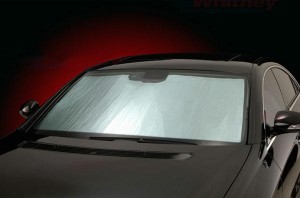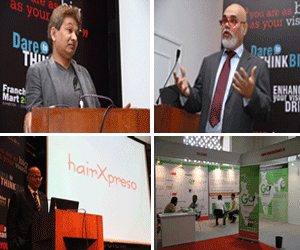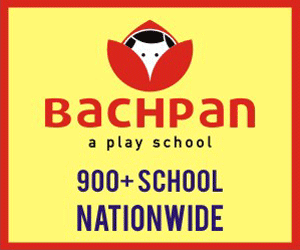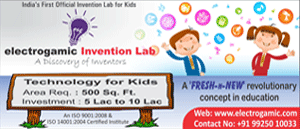The Indian auto Industry saw a sea change in the decade of 1990s with liberalization of the Indian Economy. Maruti Suzuki brought a revolution in the Indian auto industry which was never to be the same; it not only opened gates for world automobile companies to sit-up and take notice of the Indian market but also allowed the more sophisticated technology to seep into the largely traditional market.
Laminated Windscreen came into being (in Indian automobiles) in mid-1990s. Through a series of safety precedents, Government passed the ruling that due to the safety feature every vehicle should have laminated glass as its windscreen, at par with the standards across the globe. Since then all vehicles plying the Indian roads need to have a laminated glass in place as windscreen.
Laminated Glass is a two glass assembly with a PVB layer between them. It helps in minimizing the damage to the occupants of the vehicle as it arrests the impact of the thrust to itself and does not let the glass pieces to shatter and spread. It works both ways and helps in restricting the occupants from being thrown out of the vehicle as a result of the major impact. Hence, it not only restricts foreign impact to reach inside but also helps in lessening the chances of man and material from inside of the vehicle to fly-out as a result of transfer of kinetic energy (during accident or major impact). Tempered glass shatter when damaged, these flying shards can damage not only the material but are hazardous for human health and life. It’s because of these safety concerns that windscreen is essentially the laminated glass.
Auto Glass Repair
Glass Repair technology was invented in 1970s in the United States and since then has been widely used across the globe. The repair technology of glasses have evolved over the years from being a technology to repair small dings to repairing of multiple cracks, it has come a long way. The technology works on the simple logic of extracting air out of damage and filling it with optically matching resin and then treating it with Ultra-Violet light. UV rays work as catalyst in forming inter molecular bond between the glass & the resin and inter bonding between resin molecules. The refractive index of the resin is same as that of the glass hence there’s no refraction in the repaired area. Repaired area also reinstates the strength to the glass.
In India it is the costly glass replacement is the method followed when damaged. Glass repairs are a fairly new concept but with cost factor as one of the major advantages, it is fast catching up in India.
Market Potential:
The glass repair market in India is about Rs. 800 crore per year and stated to be growing at 15 percent per annum. The cost of replacement is borne by the insurance companies and the car owner and hence is a costly affair with no available alternative. Getaaid (A Prisstine Systems initiative) makes it possible to bring down the costs by repairing the damages and saving costs by as much as 85 percent. All major manufacturers like Honda, Rover, Porche, Mercedes, Nissan and Volvo have recommended glass repair technology in USA and Europe.
Getaaid will be working closely with the insurance companies in managing the huge losses through its network of franchisees. In Delhi NCR itself the loss of laminated glasses in Automobiles is almost Rs 3 crore per month, which can be brought down substantially. The laminated glasses used in construction and real estate are again a big market as the damages here are not insured hence replacement becomes more costly affair. Increasing use of laminated glasses in buildings has given rise to a market that is far greater than automobile if compared on the basis of costs involved.
Benefits of Repairs:
Economical: Glass repairs cost less than 20 percent as compared to the cost of replacement of the glass. In case of high valued glasses like the ones used in air conditioned coaches the cost of repairs is even less than 5 percent to that of replacement of glass.
Fast: Glass repairs are done without removing the glass and it takes less than 20-25 minutes to get one damaged glass repaired, which is almost one fourth the time consumed in replacing the glass. It takes one person to repair the glass while it takes 2-3 people at-least, to replace a glass. Hence, saving 5 man hours on every glass.
Environmentally Friendly: Laminated glass is Non-Biodegradable hence once replaced these glasses can never be recycled. Ending-up in dumping stations it adds harmful fumes in environment. According to an assessment in the UK, energy consumed in manufacturing a laminated glass is enough to power a washing machine for 90 minutes. Hence it is not only environment friendly but also saves energy.
Safe:
Originally fitted windscreen provides 70 percent strength to the roof from caving in when encountering an accident. At the time of accident when the vehicle turns turtle, it is the originally fitted windscreen that helps restricting the roof from caving-in and causing hurt to the occupants. A replaced windscreen fails to operate in this way and pops out when pressure is applied. Repairs allow you to keep the original glass intact thus ensuring safety to the passengers.
A replaced glass fails to operate on safety standards. A replaced glass is more prone to get dislodged at the time of accident putting at risk the occupants of the vehicle. Repairs help you keep the originally fitted glass in place and along with it the safety standards intact.
Stronger: Glass repairs, with its technological advancement make the repaired area stronger than the original glass. The inter-molecular bonding between resin & the glass, facilitated with ultra violet rays, makes the repaired area almost 30 percent stronger than the original glass. Hence, its not only safe but also strong.
Trouble Free: The damage once repaired does not spread further and gets arrested there itself hence there’s no future trouble in the damaged area.
Durable: The repairs are guaranteed for the life time hence the damage once repaired shall have no discrepancy emanating from it even after 10-15 yrs.
Franchisee Engagement Model
Getaaid (Prisstine Systems) proposes to establish a network of franchisees covering major cities and town of India. A typical franchisee shall cater to 12-15 vehicles per day and would have at-least 500-800 sq.ft area. The franchise model is as follows:
Super Franchisee: The super franchisee will look after the national region and will have office in a metro city. Area of ops: India; Office at metro city: 2000 sq.ft
Master Franchisee: The Master shall overlook the state/region mentoring the sub-franchisees under it. Area of Ops: State Capital; Office: 500 sq.ft
Sub-Franchisee: The sub-franchisee shall work in city/distt levels catering to automobiles/insurance companies and the construction industry in that area. Area of ops: Class A & B City; Office Space: 500-700 sq.ft
Micro Franchisee: The Micro franchisee shall work in small towns and class C cities and satellite towns, helping the vehicle owners/ insurance companies in managing the losses. Area of ops:Class C cities; Office Space: 300 square foot.































 +91 9909960054
+91 9909960054